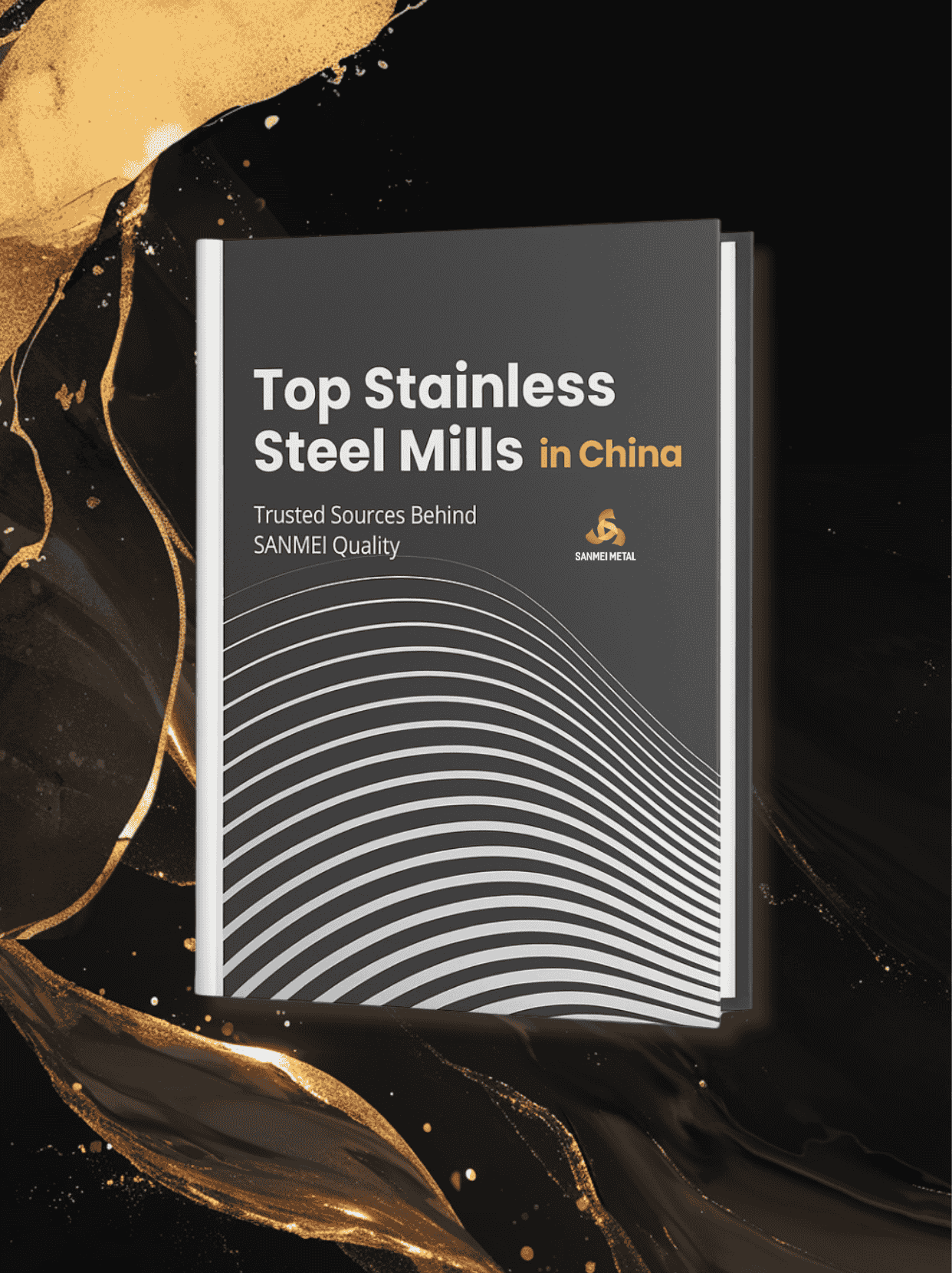
Adquira o seu LIVRE Acesso: Dossier da Siderúrgica #1 da China
Orientado para o comprador: combine fábricas por grau/acabamento/largura-espessura/aplicação
BAOWUTsingshanLiscoTisco


Propriedades gerais
O 420J2 possui uma composição química que inclui carbono (C: 0,26-0,40%), cromo (Cr: 12,0-14,0%) e outros elementos em quantidades menores. É magnético e pode ser endurecido até uma dureza Rockwell de HRc52-55 após tratamento térmico.
Aplicações
O aço inoxidável 420J2 é usado em aplicações como facas de mergulho, facas de cozinha comuns, instrumentos cirúrgicos, ferramentas manuais, eixos de bombas, espadas e punhais devido à sua dureza e durabilidade
Padrão
O 420J2 está alinhado com padrões internacionais como JIS G4303 para barras de aço inoxidável, JIS G4304 para chapas, folhas e tiras de aço inoxidável laminadas a quente e JIS G4305 para chapas, folhas e tiras de aço inoxidável laminadas a frio.
Resistência à corrosão:
O 420J2 apresenta boa resistência à corrosão em atmosferas amenas e ambientes domésticos. Também é resistente a ácido nítrico diluído, ácido carbônico, amônia, petróleo bruto, soluções detergentes, vinagre, ácidos alimentares, diversos derivados de petróleo e vapor.
Resistência ao calor:
Embora o 420J2 tenha boa resistência à corrosão em temperatura ambiente, seu desempenho em ambientes de alta temperatura é limitado devido à perda de ductilidade em temperaturas abaixo de zero e à perda de resistência em temperaturas elevadas devido ao superaquecimento.
Usinabilidade:
O 420J2 é relativamente fácil de usinar na condição recozida, mas sua usinabilidade diminui quando endurecido.
Soldagem:
A soldagem é possível para o aço 420J2, mas recomenda-se evitar a soldagem em condições recozidas, temperadas ou revenidas para evitar fragilidade e trincas a frio. O pré-aquecimento e o controle da temperatura entre passes durante a soldagem, seguidos de resfriamento muito lento e recozimento pós-soldagem, são boas medidas para prevenir trincas.
Trabalho a quente:
O trabalho a quente pode melhorar a tenacidade e a resistência ao desgaste do aço inoxidável 420J2.
Trabalho a frio:
O trabalho a frio aumenta a dureza e a resistência do 420J2, ao mesmo tempo em que melhora sua qualidade de superfície e precisão dimensional.
Recozimento:
O recozimento é realizado aquecendo-se uniformemente a 840-900 °C (1544-1652 °F) e mantendo-se a temperatura até que a seção esteja uniforme. É necessário remolho e resfriamento.
Têmpera:
O revenimento é usado para reduzir a fragilidade e as tensões internas após o endurecimento.
Endurecimento:
O 420J2 pode ser endurecido por aquecimento a 950-1020°C (1742-1868°F) e mantido até que a temperatura fique uniforme em toda a seção, seguido de têmpera em óleo ou resfriamento a ar.
Propriedade | Valor |
Densidade | 7,75 g/cm³ |
Módulo de Elasticidade | 29 x 10^6 psi |
Coeficiente de expansão térmica (32-212°F) | 10,4 x 10^-6 pol/pol°F |
Condutividade térmica | 24,9 W/m·K |
Calor Específico | 0,11 Btu/lb·°F |
Resistividade elétrica | 56 μΩ·m |
Propriedade | Valor |
Limite de escoamento, mín. | 540 N/mm² |
Resistência à tração, mín. | 740 N/mm² |
Alongamento, min. (%) | 12 |
Dureza, máx. (HRC) | 55 |
Elemento | C | Si | Mn | P | S | Cr | Não |
% | 0.26-0.40 | ≤1,00 | ≤1,00 | ≤0,040 | ≤0,030 | 12.00-14.00 | ≤0,60 |

| Tipo | Largura (mm) | Peso (MT) | Espessura (mm) | ||||
| Bobina 420J2 | 1000, 1219, 1240, 1500 ou personalizado | 3-10 | 0.15-3.0 | ||||

| Tipo | Largura (mm) | Comprimento (mm) | Espessura (mm) | |||||||||
| Folhas 420J2 | 1000, 1219, 1240, 1500 ou personalizado | 2000, 2438, 2500, 3000, 3048 | 0.3-3.0 | |||||||||
Estamos comprometidos em oferecer aos nossos clientes o melhor e mais alto nível de serviço para garantir a satisfação dos nossos clientes.









Certificado por instituições de prestígio e comprometido em aderir aos padrões internacionais em todos os aspectos.




O feedback do cliente é o reflexo mais autêntico da qualidade de uma empresa.
Veja mais referências técnicas da Sanmei Metal sobre bobinas e chapas de aço inoxidável.
Sede:
Centro de Criação, nº 142, Rua Yuhe, Cidade de Lecong, Distrito de Shunde, Cidade de Foshan, Província de Guangdong, China. 528315
Fábrica: Cidade Logística de Liyuan, Cidade de Chencun, Distrito de Shunde, Cidade de Foshan, Província de Guangdong, China. 528313
Base de apoio local na Austrália: (Yatala, QLD) – Chegando em 2026